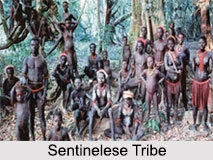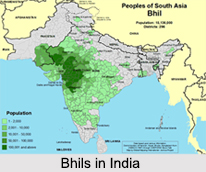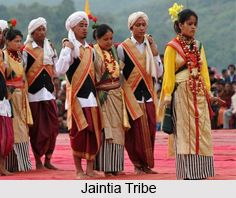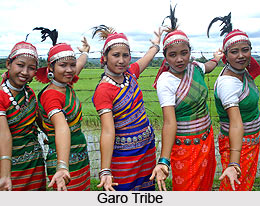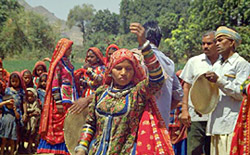Amongst various tribes who have settled down in large numbers in the soils of Gujarat, the name of these Kokna is worth to make note of. Too many of the anthropologists who have carried on research works in the soils of Gujarat, also identify these Kokna tribes in their alternative names also. These are Kokni, Kukni or Kukna. The Kokna tribes are considered as he Scheduled tribes.
As far as the original name of the community is concerned, it was lost with their migration. Their present name is derived from `Konkan` which is the western coastal belt of Maharashtra. The area between the coastal line and the Sahyadris is the original abode of the Kokna tribal community. Apart from Gujarat, the Kokna live in and around Dhulia, Nasik and Thane of Maharashtra. They are concentrated in the Valsad and Dang districts of Gujarat. As per some anthropologists, the ancestors of this Kokna tribal community were the primary inhabitants of the Konkan and it is from their ancient speeches that the germination of the contemporary Konkni language has actually taken shape. The language of the Kokna tribal community is originated rom the Indo-Aryan family. Moreover, the Kokna people also speak in Marathi language and for writing they use Devanagri script.
The costume so Kokna tribes make them distinguishable from other tribal communities of India. The women of this community wear saree and `fadki`. They follow a different pattern for their costumes. They cut the sarees into two halves and the upper half they wear is called `fadki` and the lower part of the body is covered by the saree. Sometimes they also use blouse or lehenga along with the `fadki`. The Kokna males use pagri in important occasions, religious functions and festivals.
The staple food of the Kokna tribe is rice, jawar, naglin and vari. They also eat wheat, masoor dal or red gram, tur, urad dal or black gram, Bengal gram. Most of the Kokani people have preference for vegetables, tubers, roots, fruits and they grow some of these vegetables in their fields. The Kokna tribes are generally non vegetarian but eating buffalo meat and beef is prohibited in their community while goat meat and pork are eaten with delight.
Alcohol which is made of jaggery and mahua is regularly taken by the people of this tribal community. Kokna endogamous tribal community is known as jati and exogamy is practiced by some of the clans known as kur. The Kokna tribes ear their livelihood by agriculture, some work as wage labourers and some are engaged in government services. The society of the Kokna tribal community is governed by the Panchayat.
No society can flourish without the exuberance of their cultural fetes. The Kokna tribal community also cannot be an exception. What is really splendid is that these Kokna tribes are celebrating all the major festivals of the Indian Territory, only after adding their own fervency and ritualistic elements. For example almost all the Kokna tribes fete the Diwali festival in the name of Barash. Akhatrij is also widely feted by these Kokna tribes with the Kokna tribes as the major participants. Apart from these, Bhawada is celebrated; at the completion of harvesting season, these Kokna tribes worship goddess Kali and before harvesting, worship of Gram Devi has been celebrated with festivity and jubilance.
The Koknas are worshippers of Hindu religion. They have some tribal deities and village gods and goddesses along with corn deity Kansari and gods like Khandoba, Bhairao, Bao-deo, Nag, Waghoba, Hirva, Cheda, Asara, Supali, Bir etc.
Another reason for which the Kokna tribes have gained recognition is their artistic zeal and acumen that they have developed. It has best been exemplified in all the exquisite woodcarvings that these Kokna tribes have made. The Kokna tribes shape up masks for the famous dance, namely, “Bhavada†dance. These Kokna tribes made these masks from soft wood. Various facial expressions, eyebrows, moustaches, cheeks, nose etc. are all nicely highlighted in these woodcarvings. Even the Kokan artists can made some ordinary wooden tobacco containers to be really beautiful. The art of making these containers ever are very unique. They are either shaped out of wood or prepared simply by combining pieces of wood together. Besides using wood, these Kokna tribes also make these tobacco containers from tough-skinned fruits or seeds.
After that, these Kokna tribes apply a thick coat of lead over the container and then carve wonderful beautiful designs on it. At times, these Kokna tribes made these containers to take the shapes of animals like peacock, peahen etc. These Kokna tribes are very much religious minded who worship various animals like crocodile, tiger etc.

















